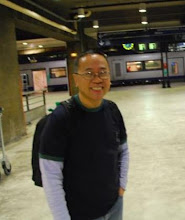
The splendor of the Carnivals owes much to its fabulous edifices that did not fail to impress and awe—from the imposing
Carnival Gate, the majestic
Coronation Throne, the expansive Hippodrome to the provincial booths and displays that vied for the spectators’ attention. The first Carnival did not have a definitive visual theme, a merry mix of American and Philippine motifs, with inspirations drawn from mythology, European fantasy and royalty.
Committees were organized to handle and manage every aspect of the Carnival activities like
Promotion, Program, Decoration, Tickets, Invitations, Sanitation, Security, Music, Dances, Sports Competition, Transportation and
Masquerade Balls. The construction of the Carnival infrastructures fell into the hands of several key people. In charge of building the main edifices was
Col. Mark L. Hersey, while the Hippodrome was put under
Col. George Langhorne, who also multi-tasked as the
King Consort of the Queen of the Occident.
Mauro Prieto headed a team of that included
Armando Campa, Manuel de Iriarte,
Vicente Singson, C. Rodriguez and
B. Roxas that designed and built the Carnival stage of 1908.

As the Carnivals became even more elaborate in the succeeding years, architects were hired to render their professional and expert services in designing the overall Carnival look, including its fabulous buildings and structures. Returning Filipino architects who were sent as
pensionados to study in the
beaux arts schools of the
American East Coast, were the first to be employed for these all-important tasks. Three of them would go on to achieve national recognition and earn their well-deserved place as leading lights of Philippine architecture:
Tomas Mapua, Carlos Barretto and
Juan Arellano.Tomas B. Mapua (b. 21 Dec. 1888/ d. 22 Dec. 1965) was the first registered architect of the Philippines who designed the 1917, 1920 and the 1921 Carnivals. The son of
Juan Mapua and
Justina Bautista, he was sent to America by the U.S. government for his high school and college education. He earned his Architecture degree from
Cornell in 1911. For the 1921 Carnival, he executed the magnificent
Magallanes Exposition Building, that had 5 high entrance arches surmounted by figural statues and the Main Entrance to the Carnival that had five expansive gateways book-ended with domed structures topped with fancy spires. Inside, the
Throne Hall of the Auditorium featured an ornate central dome supported by columns, sheltering the throne of the Queen like a
baldochine. Mapua
Mapua would go on to design and build the Manila City Hall, Manila Custom’s House, Agrifina
Circle, the
Post Office Building and the
Leyte Capitol. In 1925, he founded the
Mapua Institute of Technology (now
Mapua University), which became the premier architecture and engineering school of the country.
 Carlos Barretto
Carlos Barretto holds the distinction as the first
pensionado architect, having graduated three years earlier than
Mapua, earning his degree in 1908 from the prestigious
Drexel University in
Philadelphia. He was the second (after
Mapua) to be officially registered as an architect in 1921, as required by law that was passed by the
National Assembly that year, one of 22 Filipinos.
 Barretto
Barretto designed the Carnival infrastructures of 1935, built on exuberant
Art Deco motif that was the prevailing style of the
Commonwealth years. After the
Liberation, a group of Filipino architects that included
Barretto, organized themselves into the
Philippine Institute of Architects which proved to be of great help to the Philippines’ post-war recovery.
 Juan Marcos G. Arellano
Juan Marcos G. Arellano (b. 25 April 1888/ d. 5 Dec. 1960) was the Tondo-born child of
Luis Arellano and
Bartola de Guzman. His first interest was painting, studying under
Fabian de la Rosa and
Lorenzo Guerrero. After graduating from
Ateneo in 1908, he pursued architecture as a government scholar at the
Pennsylvania Academy of Fine Arts in 1911, before finishing his course at
Drexel, where Barrettoo had finished a few years before.
Trained in
Beaux Arts,
Arellano worked briefly in
New York before his return to to the Philippines. In 1922, he was named as the chief architect of the
Manila Carnival, creating the grand neoclassic edifices that complemented the Graeco-Roman theme of the national fair.
Arellano would go on to design the
Metropolitan Theater in 1935, his best-known work, plus the
Jones Bridge, the
Legislative Building, the
Bank of the Philippine Islands and the
Malcolm Hall of the
University of the Philippines and the
U.S. Embassy. After his retirement in 1956,
Arellano returned to painting, his first passion.

For at least 2 decades, the
Carnival City of Manila was transformed by these accomplished architects, with their gift of design—creating landscapes of sheer fantasies and building gateways to new worlds of romance, royalty and revelry, fascinating feasts for all the nation’s eyes to see.
 IMPERIAL BEAUTY. The second Miss Albay, Rosario Jaucian Imperial, belongs to a very influential family in the region known for their vast land holdings and prosperous abaca business.
IMPERIAL BEAUTY. The second Miss Albay, Rosario Jaucian Imperial, belongs to a very influential family in the region known for their vast land holdings and prosperous abaca business. 




















